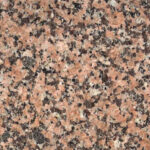Sandstone Rock is a fascinating and versatile sedimentary rock that has played a significant role in construction and various industries throughout history. Composed predominantly of sand-sized grains of mineral, rock, or organic material, sandstone offers a wealth of information about our planet’s geological processes and provides valuable resources. Let’s delve into the world of sandstone to understand its composition, types, formation, and diverse applications.
What is Sandstone Rock?
At its core, sandstone is a sedimentary rock primarily made up of quartz sand. Think of it as nature’s concrete, formed over millennia as layers of sand are compressed and cemented together. While quartz is the most common component, sandstone can also contain substantial amounts of feldspar, and sometimes finer particles like silt and clay. The specific mineral composition dictates the type of sandstone, leading to variations in its properties and appearance.
Types of Sandstone Based on Composition
Geologists classify sandstone based on its mineral content. When quartz grains make up more than 90% of the rock, it’s known as quartzose sandstone. This type is highly resistant to weathering due to quartz’s durability. Conversely, if feldspar content exceeds 25%, the sandstone is categorized as arkose or arkosic sandstone. Arkose sandstones often have a pinkish or reddish hue due to the presence of feldspar minerals. Lastly, argillaceous sandstone is identified by a significant presence of clay or silt. These finer particles can influence the sandstone’s porosity and permeability.
The Colorful World of Sandstone
One of the captivating aspects of sandstone is its varied palette of colors. The hue of sandstone is largely determined by its mineral composition and the presence of cementing agents. Argillaceous sandstones often exhibit gray to blue shades due to the clay content. However, the typical sandstone color is light tan, originating from the light-colored minerals it comprises.
The most frequently observed sandstones display diverse shades of red, a result of iron oxide (rust). This iron oxide acts as a cementing agent and coats the sand grains, imparting reddish tones. In less common instances, a purple hue can appear, attributed to the presence of manganese. These color variations make sandstone a visually appealing natural stone for various applications.
Mining and Extraction of Sandstone
The methods used to extract sandstone depend largely on the consolidation of the deposit. Loosely consolidated sandstone, resembling compacted sand, can be efficiently mined using a high-pressure hydraulic monitor. This method employs powerful water jets to dislodge the sandstone, which is then collected and processed.
For well-consolidated sandstone deposits, traditional drill-and-blast methods are employed. Explosives are used to break the rock formation, after which the sandstone is loaded using front-end loaders into haul trucks and transported for processing. Regardless of the mining method, the extracted sandstone is then processed through crushing and conveyance systems to achieve the desired size and form for its intended applications.
Versatile Uses of Sandstone
Sandstone’s durability and aesthetic appeal contribute to its wide range of applications. It is primarily utilized in two major forms: crushed stone and dimension stone.
As dimension stone, sandstone is meticulously cut into specific sizes, typically blocks and slabs, for use in building facades, paving, and landscaping. Its natural beauty and workability make it a popular choice for architectural and decorative purposes.
In its crushed stone form, sandstone is a crucial material in construction. It serves as aggregate in concrete and asphalt, providing structural support for roadways, bridges, and various building projects, both commercial and residential. From ancient monuments to modern infrastructure, sandstone rock continues to be a valuable and reliable natural resource.
